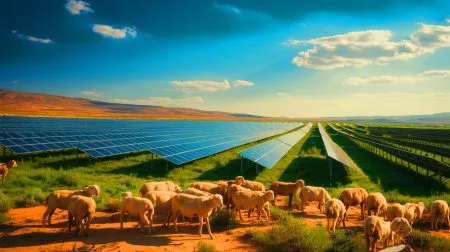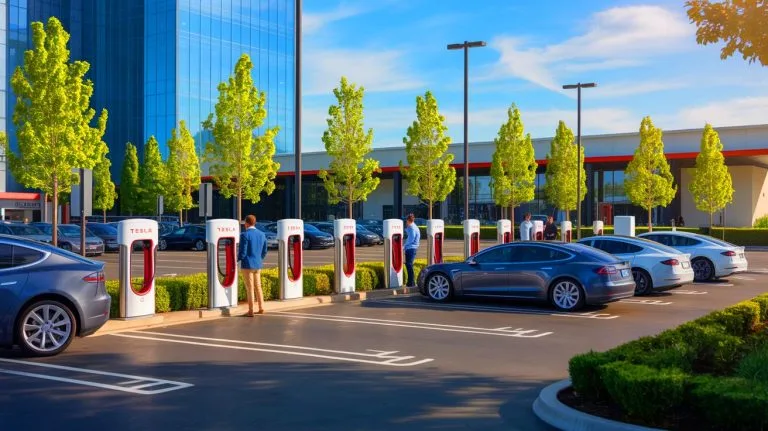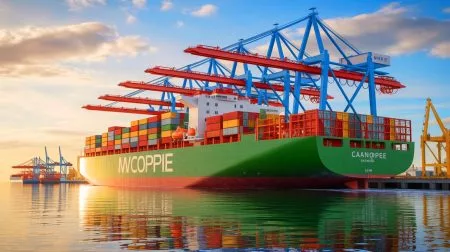| IN A NUTSHELL |
|
The excitement surrounding Tesla’s meteoric rise seems to be waning. After years of impressive growth, the California-based automaker is now confronting a significant decline in sales, particularly in the European market. The entry of Asian competitors like BYD is reshaping the competitive landscape. Despite these challenges, Elon Musk remains unfazed, introducing a novel solution to reassure investors: selling Tesla’s Superchargers directly to businesses, with starting prices at $200,000 per unit. This strategic pivot may signal a new chapter in Tesla’s business model, aiming to diversify revenue streams amid a sluggish automotive market.
Superchargers to the Rescue
In 2024, Tesla continued its relentless expansion of the Supercharger network, adding nearly 1,000 stations and 10,000 new plugs worldwide. These strategic assets quickly became cash machines, with service revenue surging by 64% from one quarter to the next. For the first time, Tesla is offering other companies the opportunity to purchase Superchargers, branded with their logos, for a modest entry fee of around $200,000 for smaller projects.
The business model is straightforward: the client company pays for the equipment and installation, while Tesla provides the hardware, software, and technical support. This clever arrangement allows Tesla to establish a strong presence in commercial parking lots, businesses, and hotels, while retaining control over management and maintenance. Companies view this as a chance to attract new customers and monetize these ultra-fast charging stations.
However, there is a catch: patience is required. From site planning, local authority permits, negotiations with electricity suppliers, construction, and testing, it will take between 12 and 64 weeks before the first charge can occur. Another constraint is Tesla’s requirement of a minimum order of four chargers per site, representing a substantial initial investment.
By delegating part of its network management to third parties, Tesla is betting on revenue growth while minimizing its own investments. This strategy also aims to rapidly increase the density of charging points, a key argument to reassure hesitant electric vehicle buyers. While the maneuver seems audacious, it marks an unprecedented commercial shift: stimulating service growth while vehicle sales stagnate.
Tesla’s Struggles
Just months ago, few experts would have predicted such a swift slowdown for Tesla. Yet, 2025 marks a turning point for the American automaker: stagnant growth, plummeting revenues and profits, and a product line struggling to renew. The new Model Y L was expected to inject dynamism, but its absence in the European market adds to fans’ frustration. Meanwhile, Chinese competitors, led by BYD, have firmly established themselves as leaders in the European market, robbing Tesla of its pioneering status.
This bleak context hasn’t stopped Elon Musk from making numerous announcements. The star CEO seems to be focusing his efforts on developing humanoid robots, Optimus, which he eagerly presents as Tesla’s future, even if results are yet to be convincing. The presentation of his robotaxi service earlier this year is also part of his futuristic projects.
Will this be enough to raise Tesla’s valuation to $1 trillion within 10 years, as Elon Musk promised? The stakes remain high, but the billionaire is full of ideas to try to restore his company’s image, even if it means surprising—or disturbing—shareholders.
Impact of Asian Competition
The rise of Asian competitors, particularly BYD, has significantly reshaped the European electric vehicle market. Tesla, once the uncontested leader, now faces formidable challenges in maintaining its market share. BYD’s aggressive pricing strategies and extensive product lineup have appealed to a broad range of consumers, who are increasingly seeking alternatives to Tesla’s offerings. This shift in consumer preference highlights the competitive intensity in the electric vehicle sector.
Moreover, BYD’s focus on innovation and sustainability resonates with environmentally conscious European customers. Their ability to deliver high-quality vehicles at competitive prices has put pressure on Tesla to reconsider its pricing and product strategies. As Tesla grapples with these challenges, the company is compelled to innovate and adapt to retain its competitive edge.
Despite these hurdles, Tesla’s strong brand recognition and established reputation provide a foundation for potential recovery. The company’s ability to leverage its technological prowess and expand its product lineup will be crucial in countering the growing influence of Asian manufacturers in the European market.
Future Prospects and Strategic Shifts
As Tesla navigates these turbulent times, strategic shifts in its business model may be necessary to secure its future. The decision to sell Superchargers to businesses signifies a broader effort to diversify revenue streams beyond traditional vehicle sales. This move aligns with a growing emphasis on infrastructure and services, potentially providing a more stable income base as the automotive market fluctuates.
Tesla’s exploration of new technologies, such as humanoid robots and autonomous vehicles, also reflects a commitment to innovation. While these ventures are in their early stages, they could redefine Tesla’s role in the broader tech ecosystem. The company’s ability to successfully integrate these technologies into its business model will determine its long-term viability.
Ultimately, Tesla’s future will depend on its capacity to adapt to changing market dynamics and consumer preferences. The company’s resilience and ability to pivot in response to challenges will be crucial factors in determining its success in an increasingly competitive landscape.
As Tesla continues to evolve, the electric vehicle industry watches closely. How will Tesla’s strategic shifts shape the future of the company and the broader market? What new innovations will emerge as Tesla adapts to a rapidly changing landscape?
Did you like it? 4.6/5 (20)






Wow, $200k for a supercharger? That’s more than my house! 😂
Is it just me, or does $200,000 sound like a lot for a “modest entry fee”? 🤔
Seems like Tesla’s diversifying just in time. Hope it works out for them!
Is this move by Tesla a sign of desperation or genius? 🤔
Do you think selling Superchargers will actually help Tesla regain its market position?
Thanks for the insights! I was wondering how Tesla planned to stay relevant with all the competition.
Wow, Tesla’s moving fast! But can they keep up with BYD? 🤷♂️
Why not focus on making cars cheaper instead of selling Superchargers? 🤨
So, is this $200,000 just a starting price? What’s the cost for larger projects? 💸
Who knew Superchargers could become such cash machines?! 🚀
Why would a business spend $200,000 on a Supercharger? What’s the ROI on that?
200k for a charger? Must come with a free car, right? 😂